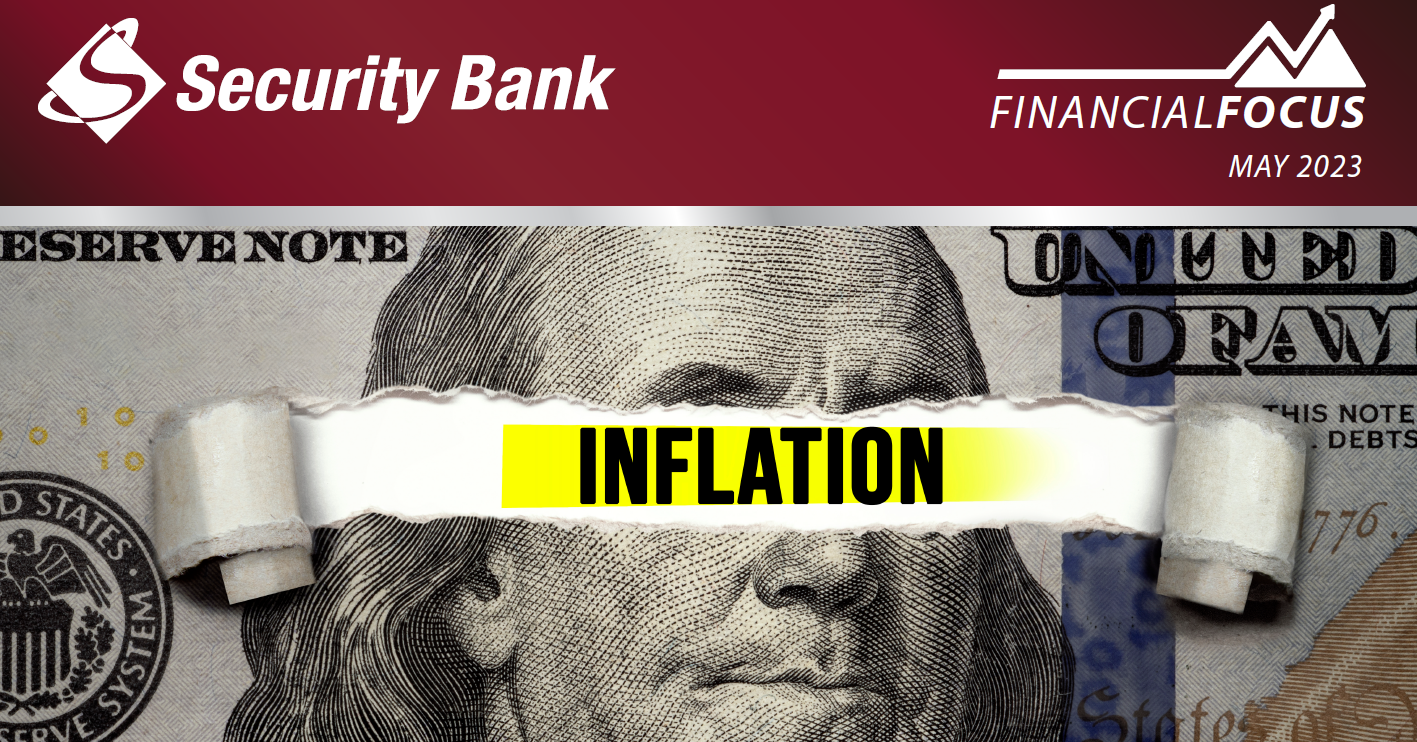
Forbes take on Inflation
May 30, 2023
| BusinessFocus-Business Focus | BankingFocus-Banking Focus
|
 We hope the year has continued to go well for you in your business! For those that operate a commercial business, you likely have first-hand experience with inflation and have made adjustments accordingly. This month's article provides a bit more detail about how it is measured. We hope the year has continued to go well for you in your business! For those that operate a commercial business, you likely have first-hand experience with inflation and have made adjustments accordingly. This month's article provides a bit more detail about how it is measured.
Best Regards,

|
How The Fed Measures Inflation, And What That Means For You
 By: Simon Moore, Forbes.com
By: Simon Moore, Forbes.com
Recent inflation has grabbed everyone’s attention. This includes the stock and bond markets and the U.S. Federal Reserve (Fed). However, with several different measures of inflation released at different times, and lots of three-letter acronyms - how can you interpret the latest government figures on inflation?
First off, it’s helpful to review what inflation is measuring. It is the change in prices over a given period, typically a month or year.
It can help to think about this using the analogy of your weight. Inflation isn’t like measuring your weight directly, but how much your weight is changing. So inflation is telling you, not that you weigh 170lbs, but that you have put on 5lbs over the past year.
This means inflation data tells us if prices are rising or falling and how fast. That’s one reason inflation is high currently, prices have risen a lot over the past 12 months, and even if new data enters the series with steadier prices, prices are expected to stay high for a while as prior month’s effects are still included in the inflation series.
Inflation is typically described on a year-on-year basis, so saying that inflation is at 8% for September 2022, means that prices are 8% higher, on average, in September 2022 than in September 2021.
CPI vs. PCE Inflation
We have the two most common measures of the prices that consumers are paying. From a financial market standpoint, CPI inflation is released earlier in the month for the prior month, so often gets a little more attention.
PCE inflation is released a few weeks later, so is often less of a surprise as CPI. CPI data have already been released for the same month once we see the PCE numbers.
From a high level perspective, the two measures are quite similar. However, PCE inflation tends to come in a little lower than CPI inflation. The differences are worth noting.
Scope Differences
CPI inflation measures the cost consumers pay directly. PCE inflation also includes services for consumers that are paid for by others on behalf of consumers, such as by employers or non-profits.
The most common example used to explain this is healthcare costs. CPI just measures consumers’ out-of-pocket costs for healthcare, whereas PCE measures healthcare services for consumers that are paid for by others, such as employers.
Weighting Differences
Perhaps the biggest challenge when determining inflation is how you weight different prices to arrive at average inflation. CPI and PCE do this using different techniques. CPI uses consumer expenditure surveys to determine what households are purchasing. PCE uses NIPA data on what businesses have sold to consumers.
Urban vs. Not
CPI measures prices for urban consumers, whereas PCE includes all prices, both urban and rural.
Generally, the PCE’s formula is considered superior. It is quicker to pick up on changes in what people are buying. However, remember CPI comes out earlier so still gets a lot of attention.
The CPI’s method is quicker and simpler as the spending on different items is held constant over a period of time, typically 1-2 years. That can mean that CPI data can overstate inflation due to being slower to recognize consumer substitutions.
For example, if the price of bananas went to $20 each, it’s quite likely that most consumers would buy a lot fewer bananas and switch to buying more apples or other fruits. PCE data would, theoretically, pick up on this during the month it occurred as business’ sales of bananas would fall. However, the CPI index would only pick up a change with its next weighting update which could be 1 or 2 years away. This is one reason CPI inflation can come in slightly higher than CPE inflation on average.
Which Is Better PCE or CPI?
The Fed has a preference for PCE data as a broader and more robust measure of inflation. PCE updates weightings more frequently, includes urban and rural prices and covers items bought on behalf of consumers as well as goods and services consumers buy directly.
However, the two metrics are historically fairly similar, though CPI will often tend to trend a little higher, and even though the PCE numbers may be more robust, CPI comes out weeks earlier which counts for a lot when it comes to financial markets. The CPI also contains more granular information on price changes, which can be helpful if you want to drill in.